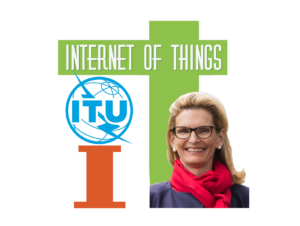In an earlier post, I wrote about Second Life, a virtual on-line world with its own economy, that has attracted a lot of individual and corporate attention [“Virtually” no escape]. Second Life is now being used for online meetings by some companies, with avatars sitting in for their real life counterparts. This new twist for online meetings is reported by Emily Steel in the Wall Street Journal [“Avatars at the Office,” 13 November 2006].
Ad agency Leo Burnett is building a facility to encourage collaboration among its 2,400 creative staffers around the world, but employees won’t have to leave their desks to get there. The company’s new “Ideas Hub” is located in Second Life, a popular three-dimensional online computer world. Increasingly, businesses, particularly in the advertising and media industries, are opening virtual offices in Second Life as an internal communications device, a way to keep their fingers on the pulse of the fast-changing digital landscape — and as a tool to recruit tech-savvy employees. By using Second Life, agency staffers, especially older ones or those who may be uncomfortable online, can experience the virtual world first hand, making it easier to respond to clients looking to design campaigns for new media platforms.
According to Steel, Second Life online business meetings can be a bit surreal. Besides the fact that one of your office mates could look like an animal, the person with the fastest fingers is likely to be able to dominate the meeting.
Meetings on Second Life can be bizarre. Essentially an elaborate online videogame a little like “The Sims,” Second Life users create a computer-generated image of themselves — known as “avatars” — which interact with fellow users, also called residents, on the service. The computer imagery allows virtual makeovers so that a fat man can look like a male model on Second Life or, if he wants, some kind of animal. Residents communicate by typing on their computer keyboard as though they were instant messaging each other, which produces subtitle-like text along the bottom of a screen.
For those who prefer oral discussions over written ones, they can use a VOIP system like Skype. That is what the new media marketing firm “crayon” does. In fact, crayon’s primary office is found on the Second Life island they call “crayonsville.” If you want to see what a Second Life office building can look like, in this case the Second Life office of London-based ad agency Bartle Bogle Hegarty, follow this YouTube link. Although Steel notes how quickly Second Life has grown, she notes her reservations:
It isn’t clear if Second Life will be more than a passing fad. Despite its rapid growth over the past couple months, Second Life’s resident count pales next to the 70 million users on News Corp.’s MySpace. And unlike that social-networking site or the video-sharing site YouTube, Second Life requires installation of special software, which may limit its appeal.
Steel notes that some ad agencies are using Second Life to recruit new employees, while others like ad agency Leo Burnett are using it to increase creativity.
Leo Burnett hopes its creative staffers will use its Ideas Hub on Second Life like a “creative lounge,” where they can meet and mingle to share ideas, according to a spokeswoman for the firm. The hub also will host agency functions previously held in the real world, such as an event every spring where industry professionals predict which ads will win the Cannes Advertising Festival competition held in June. Mr. Tutssel, the creative chief at Leo Burnett, predicts the agency will eventually hold news conferences on the site. “It is our home, so let’s be as creative as we possibly can be,” he says.
Second Life is one of the companies that plans on taking advantage of excess server capacity being offered by Amazon in order to deal with unexpected surges in activities. I think Steel’s reservations about the ultimate popularity of virtual worlds for truly mass audiences are correct, but fascinating and useful things will take place in such worlds and resilient enterprises would do well to keep an eye on how such worlds are being utilized.
Changing tracks a bit. There has been some interesting feedback on my last couple of posts. Some bloggers like Tom Barnett and Shawn Beilfuss agree that Web 3.0 holds great promise for increasing the usefulness of the Web and improving connectivity. Dan Abbott is not so sure.
Mark Safranski wrote a very supportive post about spreading the “gospel of resilience” and the article in Esquire Magazine. Tom Barnett also wrote about the article, which is something I would expect from a contributing editor for the magazine and a close friend. Thanks to all for enriching the discussions and helping keep discussions alive.




